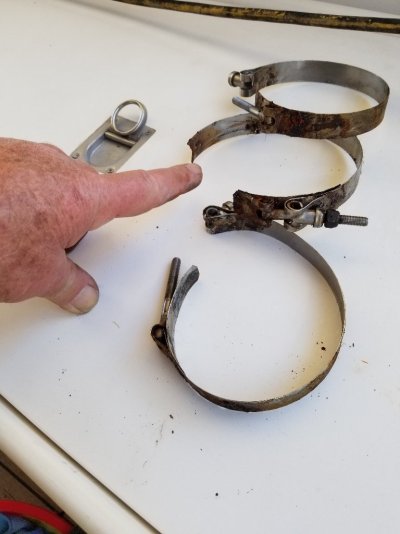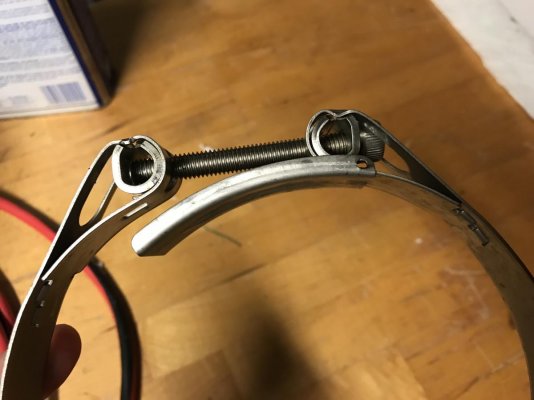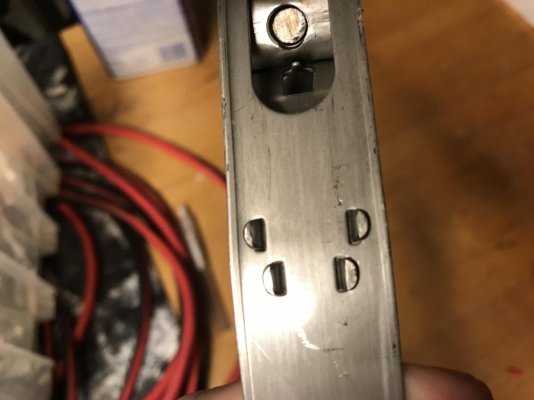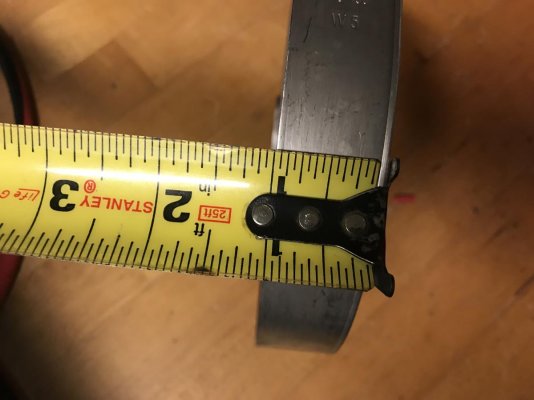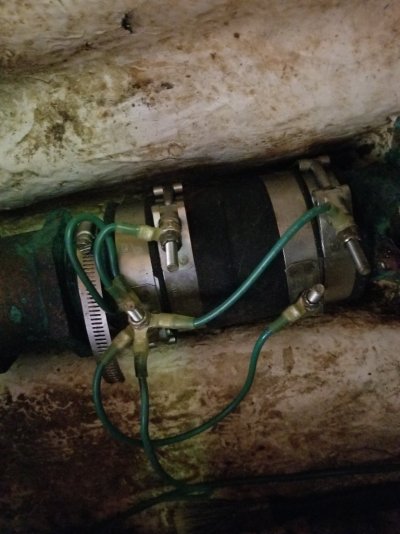You are using an out of date browser. It may not display this or other websites correctly.
You should upgrade or use an alternative browser.
You should upgrade or use an alternative browser.
Bonding
- Thread starter Sleeping Bear
- Start date
The friendliest place on the web for anyone who enjoys boating.
If you have answers, please help by responding to the unanswered posts.
If you have answers, please help by responding to the unanswered posts.
boomerang
Guru
- Joined
- Apr 29, 2016
- Messages
- 1,399
- Location
- united states
- Vessel Name
- Wandering Star
- Vessel Make
- PSN40
Aren't the clamps isolated from any metals by the rubber hose? I can't see how bonding the packing gland would stop the clamps from deteriorating.
Comodave
Moderator Emeritus
- Joined
- Jul 2, 2015
- Messages
- 21,302
- Location
- Au Gres, MI
- Vessel Name
- Black Dog
- Vessel Make
- Formula 41PC
More likely leaking sea water caused rust in the clamps. The clamps don’t need to be bonded due to the hose insulating them. The clamps I like to use are all 316 S/S without welds. They are made by ABA or AWAB. But they are pricey but that shouldn’t happen with them. When they weld the T bolt clamps they are more likely to rust.
Comodave
Moderator Emeritus
- Joined
- Jul 2, 2015
- Messages
- 21,302
- Location
- Au Gres, MI
- Vessel Name
- Black Dog
- Vessel Make
- Formula 41PC
Comodave
Moderator Emeritus
- Joined
- Jul 2, 2015
- Messages
- 21,302
- Location
- Au Gres, MI
- Vessel Name
- Black Dog
- Vessel Make
- Formula 41PC
Because they used the wrong filler. Filler rod is available for 316 and 316L. Probably in wire, too.
That doesn’t matter since they don’t the clamps will rust. Why they rust is pretty much irrelevant.
Sleeping Bear
Veteran Member
Yes, there is always water there, just the way the boat is designed, these clamps always sit in water.
The point of bonding is so that metals are no longer isolated, be it thru hulls, strainers, rudders, stuffing boxes etc, so that the metals don't create galvanic current between themselves, but instead all have the same potential.
I like the look of the clamps without welds, but even without welds the stainless can erode if not protected by bonding.
The point of bonding is so that metals are no longer isolated, be it thru hulls, strainers, rudders, stuffing boxes etc, so that the metals don't create galvanic current between themselves, but instead all have the same potential.
I like the look of the clamps without welds, but even without welds the stainless can erode if not protected by bonding.
Attachments
boomerang
Guru
- Joined
- Apr 29, 2016
- Messages
- 1,399
- Location
- united states
- Vessel Name
- Wandering Star
- Vessel Make
- PSN40
Yes, there is always water there, just the way the boat is designed, these clamps always sit in water.
The point of bonding is so that metals are no longer isolated, be it thru hulls, strainers, rudders, stuffing boxes etc, so that the metals don't create galvanic current between themselves, but instead all have the same potential.
I like the look of the clamps without welds, but even without welds the stainless can erode if not protected by bonding.
I understand the purpose of bonding. All of those wires connecting the hose clamps are a band-aid for a bigger problem than a rusted hose clamp. If you have stray current in your bilge water, you need to find the source. I think you simply need to invest in quality clamps if you want to stop the failure.
From the pictures , the failure looks like failure from rust, not oxidation. The good news is ,the picture of your packing gland (which does not seem to be bonded, btw) ,makes me feel better about ours! Ours is hard to access. Yours is crammed!
Comodave
Moderator Emeritus
- Joined
- Jul 2, 2015
- Messages
- 21,302
- Location
- Au Gres, MI
- Vessel Name
- Black Dog
- Vessel Make
- Formula 41PC
I didn’t understand that your shaft log has standing water around it. That is a very poor design. I would see what you can do to eliminate the water around the shaft log. Or maybe if the water is from the log dripping maybe go to a dripless shaft log. Even the best clamps will deteriorate if they are submerged in water continuously. But I would certainly go to the non welded clamps if you can’t get rid of the water and put the clamps on an inspection schedule to check their condition.
i love dripless seals. it's so nice to have a dry bilge.. i just don't think there's room to fit one in there. the bellows would interfere against the hull. i only have experience with the pss ones though, maybe others have a different design.
a different pump setup might be a good idea. something with a hose to reach down and pump to a very low level.
a different pump setup might be a good idea. something with a hose to reach down and pump to a very low level.
Similar threads
- Replies
- 5
- Views
- 359
- Replies
- 17
- Views
- 1K

